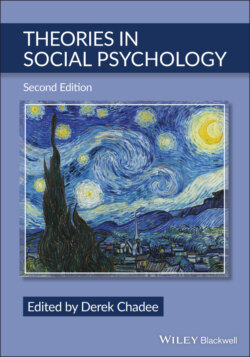Читать книгу Theories in Social Psychology - Группа авторов - Страница 14
Effects of Reactance
ОглавлениеMuhlberger et al. (2020, p. 204) in discussing the irrationality of psychological reactance note:
“Wicklund (1997) says that a person whose freedom is not threatened moves toward the best solution in terms of cost-benefit ratio but as soon as the freedom is threatened, reactance stops this process and the person gets biased toward the freedom-restoring.”
Reactance as a motivational force pushes the individual to reduce levels of arousal. Display of reactance decreases arousal and leads to restoration of free behavior either directly, via exhibiting the threatened behavior, or indirectly, via focusing on the source (i.e., discrediting or attacking). Reactance is displayed on two levels – behavioral and nonbehavioral (subjective) – and a range of reduction options exist on these levels (Brehm, 1966; Brehm & Brehm, 1981; Miron & Brehm, 2006). The theory also distinguishes between reactance motivation and reactance striving, with the former referring to the subjective desire to restore or maintain the freedom that is perceived to be threatened and the latter an attempt to engage in actual behavior to restore or maintain the threatened freedom (Brehm, 2004 ; Mühlberger et al., 2020).
The individual adopts several behaviors to reestablish a sense of freedom, including direct behavioral reassertion of freedom; developing a greater liking for the behavior that was threatened and displaying the threatened behavior; indirect reassertion of freedom by adoption of extreme (e.g., costly, taboo, or dangerous) behaviors that imply power to display eliminated behaviors (boomerang effect); and aggressive behavior directed toward the entity threatening the freedom. There are situations in which outcomes are uncontrollable (e.g., a situation of learned helplessness) and freedoms are impossible to restore.
In these situations, an individual may relinquish freedom so as to reduce or eliminate reactance (Brehm & Wortman, 1975). In situations of exposure to threats by powerful communicators, reactance is reduced when there is a possibility of future interaction, negative consequences to others, and negative consequences to oneself (Miron & Brehm, 2006). In group situations, individuals may comply with the group’s alternatives rather than display reactance. However, consequences for future interaction within the group would be considered. In both individual and group situations, the cost and benefit analysis will determine the reduction of reactance strategy adopted (Miron & Brehm, 2006).
Reactance effects exist on a continuum from physiological arousal with no observable signs to hostility. Other reactance reduction strategies suggested in the literature include the following:
1 Derogate and discredit threatening sources. This strategy is adopted, especially if the source does not have the legitimate power to threaten the freedom.
2 Display aggression and hostility toward the threatening source.
3 Decrease the proportion of freedoms that were threatened.
4 Compensate by increasing other freedoms .
5 Seek opportunities to counter threatening messages/sources.
6 Increase the number of available freedoms.
7 Reduce compliance behavior.
8 Position oneself to increase future freedom behavior.
9 Increase self-direction to one’s behavior in achieving one’s goal of reducing reactance.
10 Change cognition (e.g., reevaluate the threat and define it as not posing a threat to freedom).
11 Change behavior (e.g., engage in behaviors that would compensate for the threat).
12 Remove the threat (e.g., leave the relationship).
13 Reconcile oneself to the loss of freedom.
14 Reduce reactance by implication. Reactance by implication occurs when we observe someone’s freedom being threatened. Reactance can also be reduced vicariously in the same way by observing the restoration of the other’s freedom.
15 Seek out others who can assist in the restoration of our freedom.
16 Subjectively increase perceived available behavior alternatives.
17 Subjectively, imaginatively, seek out others who can assist in the restoration of our free behavior.
18 Deny the presence of a threat.
19 Persevere by focusing on maintaining and protecting non-threatened free behaviors.
20 Adopt impression-management strategies.
21 Adopting the perspective of threatening person – perspective-taking
22 Restoration postscript suggesting freedom of decision making is still present.
23 Creating autonomy and self-determination.
